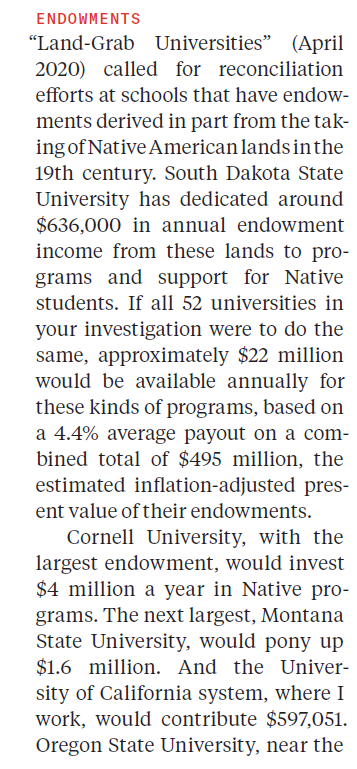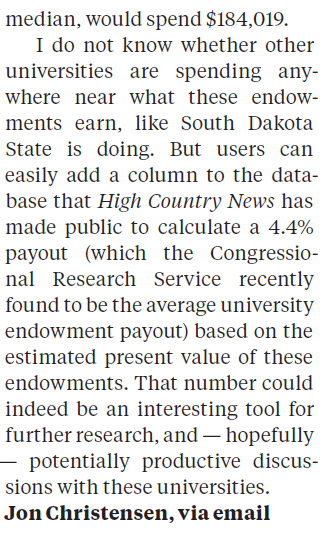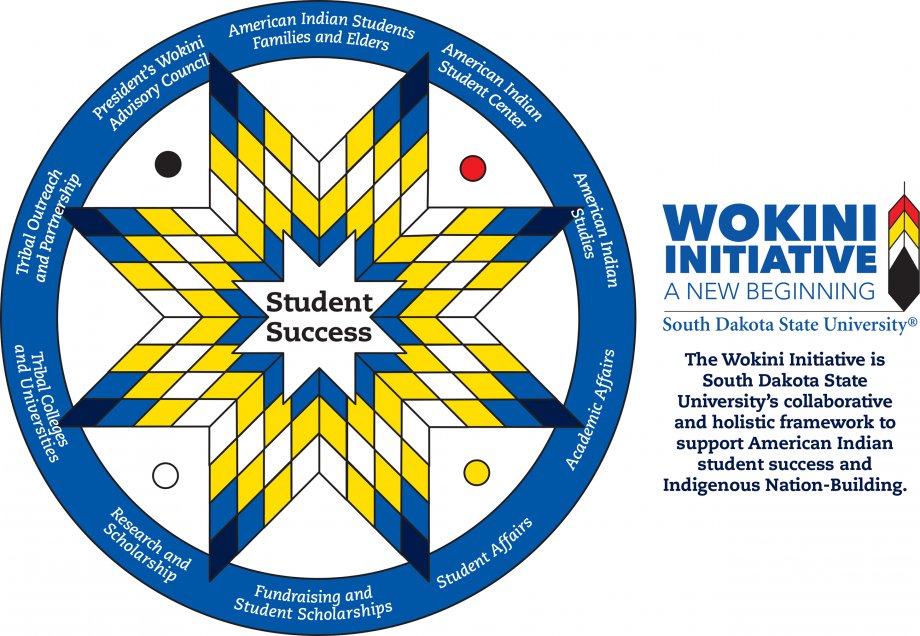For today’s K’acha Willaykuna survivance story, we turn to the Wokini Initiative at South Dakota State University. According to a letter to High Country News (which you can read below), in response to their far-reaching article Land-Grab Universities: Expropriated Indigenous Land is the Foundation of the Land-Grant University System, South Dakota University, a land-grant university, has dedicated roughly $636,000 in annual endowment to programs and support for Native students.


The letter-writer – Jon Christensen – suggests that if all 52 land-grant universities – including our own Ohio State University – were to do the same as South Dakota University, then around $22 million would be available annually for these programs to support Indigenous students. As the original article made clear – through detailed analysis of the data – land-grant universities were not only built on Indigenous land, but their endowments were generated through sale of Indigenous land. For Ohio State University, this included land called ‘scrips’ far away from Ohio, including Nebaska and California. Through the 1862 Morrill Act, Ohio State received 614,325 acres of expropriated Indigenous land (3rd in amount behind Cornell, with 977,909 acres and Penn State, with 776,514 acres). You can see all the data from this report here: https://www.landgrabu.org/
The original High Country News article ends by referencing South Dakota University and the specific programs raised in the reader’s letter:
In the fiscal year 2019, Morrill lands still held by South Dakota produced nearly $636,000 in revenue. Through the Wokini Initiative, that money now goes to Indigenous students.
Reading about the Wokini Initiative, it becomes clear that it was the presence and persistence of this visible and active entity that made possible the transformation of the Morrill lands endowment into programs for Indigenous students.

What would it mean for Ohio State University to create its own version of the Wokini Initiative? Of course, the conditions in Ohio are different in terms of Indigenous demographics and the fact that (as far as I know) there are no Morrill lands still held by the University that generate revenue. However, the origins are the same; a history of dispossession of Indigenous land to generate endowments for the foundation of the university. This year is the 150 year anniversary of Ohio State University’s founding in 1870 and what better way to turn to celebrate the institution’s foundation than by creating an initiative that would acknowledge this history of dispossession. As Barry Dunn (Rosebud Sioux), president of South Dakota State University states (and this is the final word in the High Country News article):
You can’t go back and change the beginning. But you can start today and change the ending.
K’acha Willaykuna is one of several projects that were funded by the Global Arts and Humanities Discovery Theme at Ohio State University through a call to focus on Indigenous Arts and Humanities. In addition to K-acha Willaykuna, focused on Andean and Amazonian Indigenous Arts and Humanities, there are groups called Ancient Indigenous Monuments and Modern Indigenous Art and Indigenous Ohio: OSU and Native Arts and Humanities Past and Present.
What would it mean if, as part of our work, we came together to create a version, no matter how modest, of the Wokini Initiative here at Ohio State?
One place to start – following the lead of another Midwestern land-grant institution – Michigan State University – would be to incorporate language on the Morrill Act’s relationship to expropriation and genocide in an extended land acknowledgment. Here is the current land acknowledgment for Ohio State:
Can all of the Discovery Theme projects funded by the Global Arts and Humanities come together to celebrate the founding of Ohio State University by petitioning for the expansion of this land acknowledgement to all of the expropriated Indigenous land that made our institution possible? From this expanded acknowledgment, can we then work together to create our own version of the Wokini Initiative to create programs that support Indigenous students at Ohio State?
Of course, as we weather the COVID-19 crisis, we may be told that now is not the time for such an initiative. However, if it was the original land-grant system that will enable Ohio State University to survive the difficult financial times of the 19th century, it could be its willingness to address this history that could make it a center for survivance into these increasingly difficult financial times of the 21st.